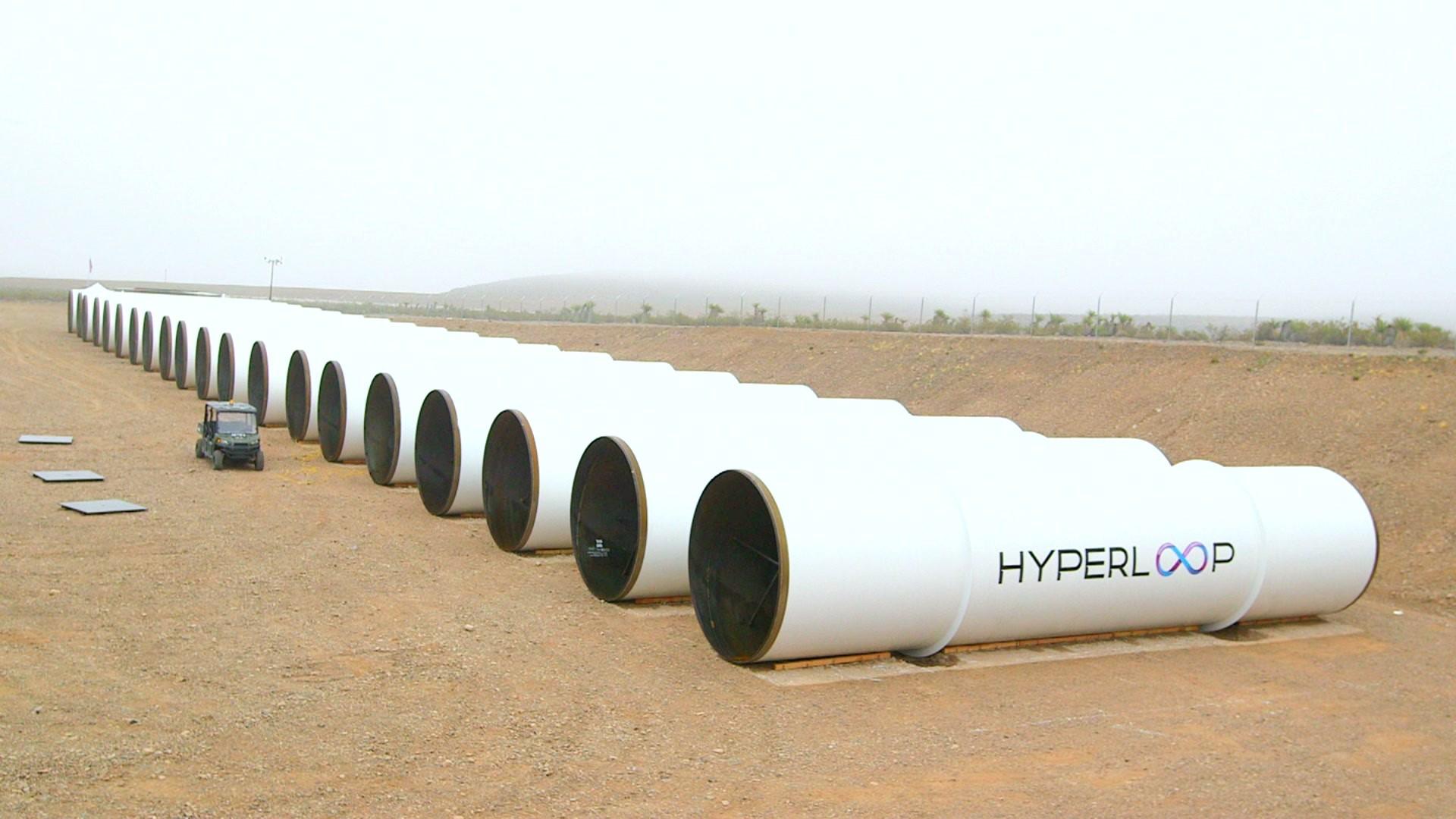Winning Hyperloop design revealed by MIT engineers
- Published

The concept pod will be built as a prototype
Designs for passenger pods that could travel through airless tubes have been revealed by a team from the Massachusetts Institute of Technology.
The Hyperloop is a conceptual transport system in which passenger pods could be fired through vacuum tubes at more than 600mph (1,000km/h).

The MIT pod could have colourful livery
The MIT team came first in a SpaceX competition to design pods that could be tested in a prototype tube.
The team will now have the opportunity to build and test its design in the US.

The MIT pod has magnet skis that lift it during high-speed cruising
Elon Musk - the entrepreneur behind companies such as Paypal, SpaceX, and Tesla Motors - announced his vision for a Hyperloop transport system in August 2013.
Although SpaceX is not developing its own commercial Hyperloop, the company says it wants to "accelerate development" of the idea and is building a mile-long test track in California.

The winning team will get to test their design
The winning entries in the company's design competition will now have the opportunity to test them in full-scale tubes over the summer.
Describing his team's winning design, chief engineer Chris Merian said: "Our pod focuses on levitating as well as moving at really high speeds."

The pod has wheels at each end to allow low-speed exit from the tubes
"Those are the two things that we see as crucial to this being a true Hyperloop pod," he added.
To help reassure potentially nervous riders, the MIT designers have included fail-safe brakes, which would stop the pod if the computer systems failed.
However the design currently does not have space for cargo or passengers.
More than 115 teams entered the design competition, with the MIT engineers scooping the Best Overall Design prize.
Twenty-two teams will go on to test their pod designs on the SpaceX test track.

Mr Musk made a surprise appearance at the event
Speaking at the award ceremony in Texas on Saturday, Mr Musk described the next stage of the competition.
"The basic idea with the competition is we're going to try to get the highest possible speed in the 1.5 km (one mile) track, and then of course you have to stop before the end.
"There will be foam put at the end, so you might recover some pieces of your pod," he told an enthusiastic audience.
"The goal is to come up with something that could ultimately be used. If you were to extend the track to hundreds of kilometres, the system would still work.
"What we intended to do with Hyperloop was really to spur interest in new forms of transportation, and I'm starting to think this is really going to happen.
"It's clear that the public and the world wants something new."
- Published21 January 2016
